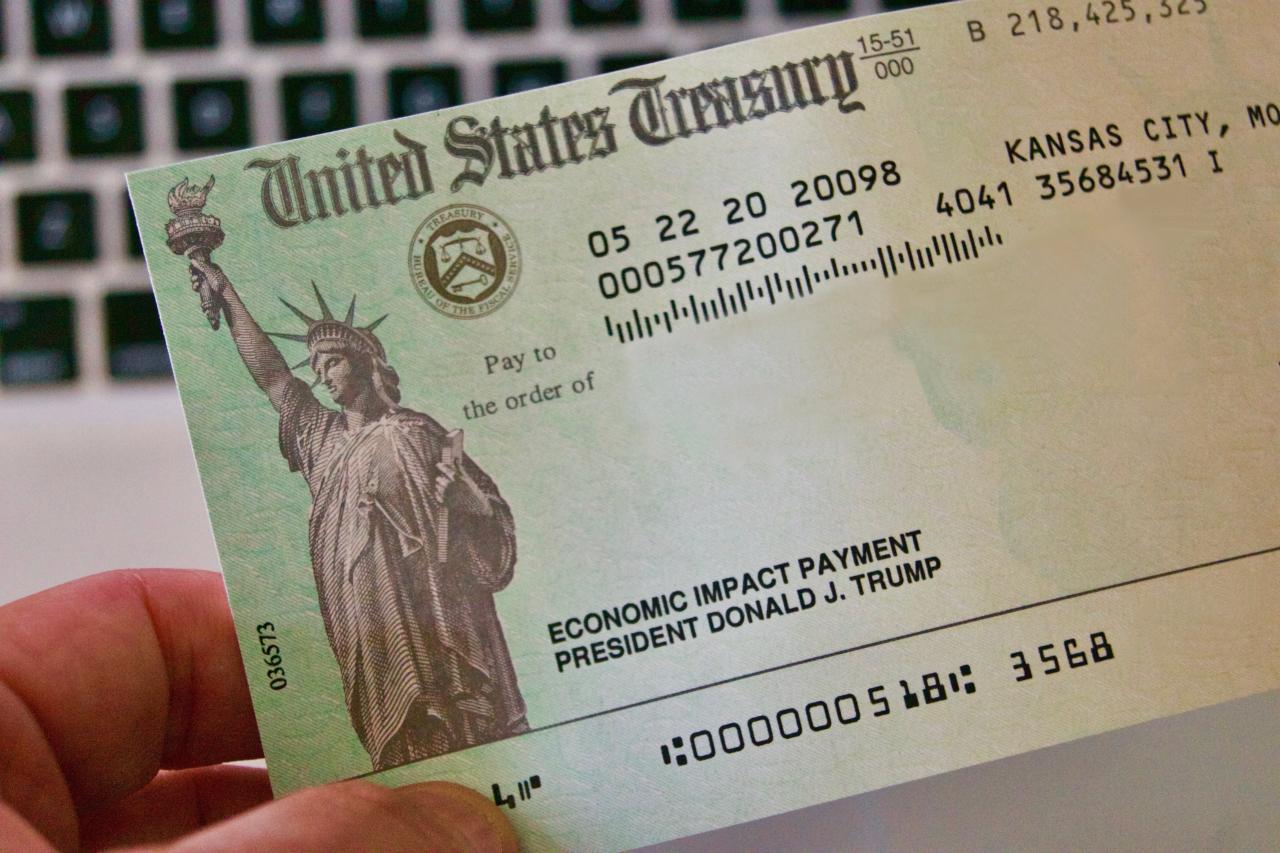Understanding the Stimulus Check Payment Formula sets the stage for this enthralling narrative, offering readers a glimpse into a story that is rich in detail and brimming with originality from the outset. Navigating the complexities of government assistance programs can be daunting, especially when it comes to understanding the eligibility criteria and calculating the amount of financial support you may receive.
This comprehensive guide will demystify the process, providing a clear and concise explanation of the stimulus check payment formula, outlining the factors that determine eligibility, and illustrating how the payment amount is calculated.
The stimulus check program was designed to provide financial relief to individuals and families during times of economic hardship. This guide will explore the various aspects of the program, including the eligibility requirements, the calculation formula, the impact of dependency status, and the methods used to distribute payments.
We will also delve into the history of stimulus checks, highlighting key differences between past and present programs, and discussing any recent updates or changes.
Stimulus Check Eligibility
The stimulus check, officially known as the Economic Impact Payment, was a government program designed to provide financial relief to individuals and families during the COVID-19 pandemic. To be eligible for a stimulus check, individuals needed to meet specific criteria related to their income, residency, and dependency status.
This section will delve into the eligibility requirements for stimulus checks, exploring the income thresholds, potential disqualifying factors, and how dependency status impacts eligibility.
Income Thresholds
The eligibility for stimulus checks was determined by income levels. Individuals with adjusted gross income (AGI) below certain thresholds were eligible for the full payment amount. The income thresholds varied depending on filing status and the year of the stimulus program.
For example, in the first stimulus package (CARES Act), single filers with an AGI below $75,000 were eligible for the full payment, while married couples filing jointly with an AGI below $150,000 were eligible.
Disqualifying Factors
While income thresholds were a primary factor in determining eligibility, several other factors could disqualify individuals from receiving stimulus payments. These factors included:
- Non-resident alien status:Individuals who were not US citizens or permanent residents were generally ineligible for stimulus payments.
- Filing as a dependent:Individuals claimed as dependents on someone else’s tax return were not eligible for their own stimulus check.
- Prior stimulus check receipt:Individuals who had already received a stimulus check under a previous program were not eligible for additional payments under subsequent programs.
Payment Amount Calculation
The amount of the stimulus check was determined by a formula that considered the individual’s income and dependency status. This section will break down the calculation process and provide examples to illustrate how different income levels impact the payment amount.
Formula and Calculation Process
The stimulus check amount was calculated using a formula that phased out the payment for individuals with higher incomes. The formula typically involved a base payment amount, which was then reduced by a certain percentage for each dollar of income exceeding the threshold.
For example, in the first stimulus package, the base payment amount for single filers was $1,200, and the payment was reduced by $5 for every $100 of income exceeding $75,000.
In this topic, you find that Stimulus Check Payment Amounts is very useful.
Example:
A single filer with an AGI of $80,000 would receive a reduced stimulus check. The payment would be reduced by $250 (5% of $5,000, which is the income exceeding $75,000). Therefore, the final stimulus check amount would be $950 (1,200 – 250).
Dependency Status and Payments
The number of dependents claimed on a tax return also affected the stimulus check amount. Each qualifying dependent entitled the recipient to an additional payment, typically $500 per dependent. This section will explore how dependency status influences the stimulus check amount and the qualifications for claiming dependents.
Qualifying Dependents

To qualify as a dependent for stimulus payments, individuals had to meet specific criteria, such as being under 17 years old, being a student, or having a disability. Dependents who were claimed on someone else’s tax return were not eligible for their own stimulus check.
Example:
A married couple filing jointly with two qualifying dependents and an AGI below the threshold would receive a total stimulus check amount of $3,200 (1,200 + 1,200 + 500 + 500).
Payment Distribution Methods
Stimulus checks were distributed through various methods, including direct deposit, mail, and debit card. This section will explore the different distribution methods, the process for receiving payments, and potential delays or complications associated with each method.
Direct Deposit
The most common method for receiving stimulus checks was through direct deposit. Individuals who had provided their banking information on their most recent tax return typically received their payments directly into their bank accounts. This method generally resulted in faster payment delivery compared to other methods.
Mail, Understanding the Stimulus Check Payment Formula
Individuals who did not have their banking information on file with the IRS received their stimulus checks by mail in the form of a paper check or a prepaid debit card. Mailing checks could take several weeks or even months, depending on the postal service’s efficiency and the recipient’s address accuracy.
Debit Card
In some cases, stimulus payments were sent via prepaid debit cards, particularly for individuals who had recently moved or whose address was not readily available. These debit cards were mailed to recipients, and they could be used to make purchases or withdraw cash at ATMs.
Stimulus Check History and Updates: Understanding The Stimulus Check Payment Formula
The stimulus check program has evolved over time, with several rounds of payments distributed under different legislation. This section will provide a timeline of previous stimulus check programs, highlight key differences between past and present programs, and discuss any recent updates or changes.
Timeline of Stimulus Check Programs
- CARES Act (March 2020):The first stimulus check program, part of the Coronavirus Aid, Relief, and Economic Security Act, provided payments of up to $1,200 for individuals and $2,400 for married couples.
- Consolidated Appropriations Act (December 2020):The second stimulus check program, included in the Consolidated Appropriations Act, provided payments of up to $600 for individuals and $1,200 for married couples.
- American Rescue Plan Act (March 2021):The third stimulus check program, part of the American Rescue Plan Act, provided payments of up to $1,400 for individuals and $2,800 for married couples.
Key Differences Between Stimulus Programs
While the overall purpose of the stimulus check programs remained consistent, there were key differences between them, including the payment amounts, eligibility criteria, and income thresholds.
Recent Updates and Changes
The stimulus check program has been subject to updates and changes over time. These updates may include adjustments to eligibility criteria, income thresholds, or payment amounts. It is important to stay informed about any recent updates or changes to the program to ensure accurate information.
Ending Remarks
The stimulus check payment formula, while seemingly complex, is designed to be fair and equitable. By understanding the factors that influence eligibility and the calculation process, individuals can determine whether they qualify for a payment and estimate the amount they may receive.
This guide has provided a comprehensive overview of the program, empowering readers with the knowledge they need to navigate the process confidently and effectively.
Expert Answers
What if I received a stimulus check in the past, but my income has changed since then?
Your eligibility for a stimulus check is determined by your income in the relevant tax year. If your income has changed significantly since you last received a payment, you may need to re-evaluate your eligibility.
If I am a student, am I eligible for a stimulus check?
Student eligibility for stimulus checks depends on several factors, including your income, filing status, and dependency status. It’s recommended to consult with a tax professional to determine your specific eligibility.
What happens if I am expecting a child during the year the stimulus checks are being distributed?
You may be eligible for a larger stimulus check based on the number of dependents you claim on your tax return. It’s important to update your information with the relevant authorities to ensure you receive the correct amount.
What if I received a stimulus check, but I believe the amount was incorrect?
You may be able to file an amended tax return to correct any errors in your stimulus check payment. It’s recommended to consult with a tax professional to determine the best course of action.






